Dentistry

The health of our patients’ teeth and gums is important to us. Carnivore teeth are designed to kill prey, rip the flesh apart, grind their bones, and swallow it in discrete boluses for digestion. Most of our patients don’t have to hunt for their food. Still their teeth are integral to their health:
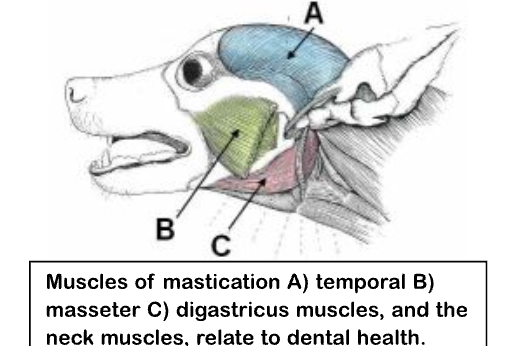
- They prehend and grind food (but less essentially, for toothless dogs can still fulfill this function)
- Chewing builds and maintains muscle mass in the jaws, head, and neck. This neuromuscular connection between muscles of the jaw, head, and neck and the nervous system is termed the stomatognathic system. Poor dental health can contribute to head and neck pain, and even contribute to pain further down the spine through the thoracic, lumbar and sacro-iliac joints. Can poor dental health contribute to lower limb pain? Yes.
- The teeth and periodontal tissue are potential portals for bacteria to enter the circulation and adversely affect the health of the heart valves, the kidneys, the eyes, and other finer vascular beds in the body.
And especially….. - Teeth roots are deeply innervated, especially multi-rooted teeth. Having unhealthy teeth is painful, and significantly detracts from everyday quality of life and poses a health risk for the animal over time.
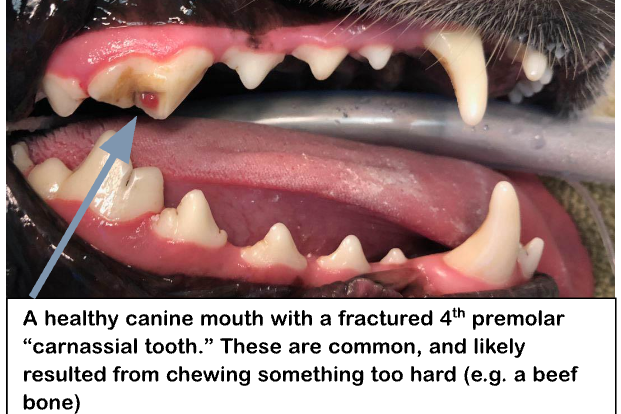
Most of us have experienced dental pain, and it's intense and distracting. Our animal companions don't show this pain in the same way. They have limited ways of expressing this feeling.
Animals with dental pain may favor one side of their jaw when chewing and develop muscle tension that translates to the rest of the spine. These animals may also become depressed, less active, and less joyful. Many caretakers exclaim their animal companions have more energy and ‘joie de vie’ after removal of a diseased tooth.
But of course, the goal is to keep all teeth in the mouth! After all, we’re a holistic clinic. It’s important to realize dogs and cats vary greatly in their inherent dental health. Small dogs are notorious for having periodontal disease and generally don’t like to chew on items ‘designed’ for dental care.
Larger dogs generally have stronger, healthier teeth and are more likely to chew on a physical substrate (e.g., raw poultry bones, root and hoof chews, etc.) to maintain dental health.
The healthiest cat mouths belong to hunters. Indoor-only cats will usually lose many of their teeth over their lifetime – they rarely eat anything they need to tear and grind, and most will not tolerate brushing of their teeth (there are exceptions!).
For many smaller dogs and cats, the solution to keeping as many teeth as possible is frequent, routine cleanings. We offer affordable, routine, prophylactic cleanings (“prophies”) for creatures with stage 1 and 2 periodontal disease (see chart below). We use state-of-the-art anesthesia (propofol, sevoflurane) and blood pressure support with fluids and BP monitoring. Patients wake up quickly, with no anesthetic grogginess, and have a clean set of teeth.

If periodontal disease is more advanced, timely intervention may save certain teeth. Still, infected and damaged teeth have to be removed in order to alleviate pain and optimize health.
We will safely anesthetize these patients, radiograph their teeth, and perform a full dental examination to determine if dental caries (cavities) or furcations (damage to the periodontal tissue) is present. If extractions are necessary, we’ll inform the caretaker that oral surgery is necessary and proceed once proper pain management (local anesthesia, administration of pain medications) has been administered. These patients wake up with some degree of grogginess but recover quickly due to the best anesthetics.
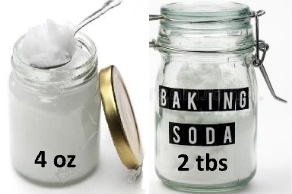
Again, our goal is to help our patients retain their teeth. We recommend caretakers introduce their cat or dog to toothbrushing with a toothpaste made by combining 4 oz of coconut oil, 2 oz turkey broth, 2 tablespoons baking soda, and gently rubbing this on the gum line of their buddy’s teeth. A gradual introduction should be sufficient initially to introduce them to the taste. The softest bristled (pediatric) toothbrush, or a finger brush, could be used.
Homemade Recipe for Pet Toothpaste
- 4oz of coconut oil
- 2oz turkey broth
- 2tbs baking soda, warmed and mixed
Instructions: Apply with fingers or very soft-bristled brush
If dogs will chew, we recommend that they chew on root chews (e.g. heather tree root) or eat poultry bones appropriate for their size. (see poultry bone photo below). Cats with aggressive appetites may eat chicken necks, or the narrow ends of turkey necks, but it’s rare. Dogs that have access to beef bones too commonly fracture their carnassial (large premolar) teeth, so we cannot recommend these in good faith.
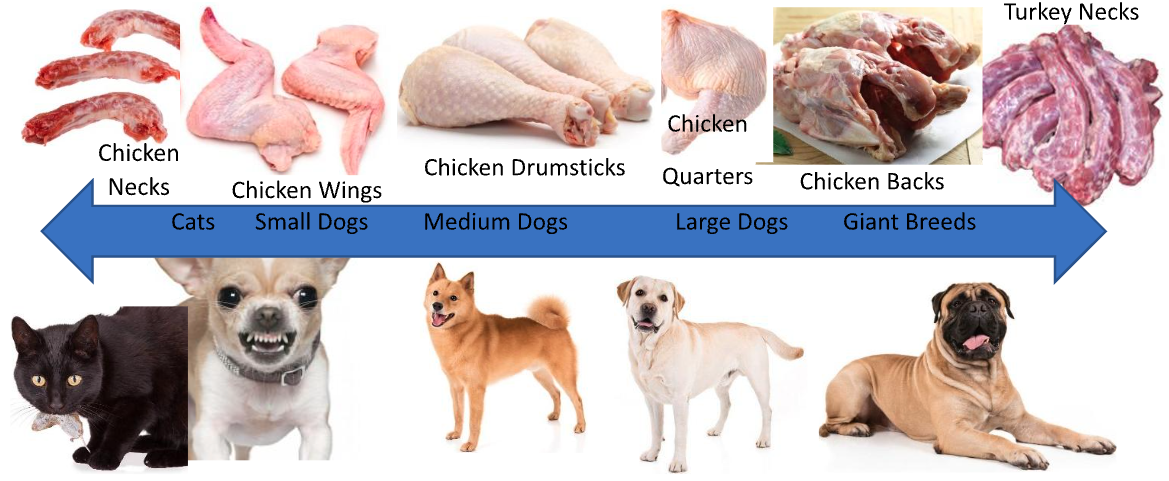
Feeding raw bones is an acceptable practice to build jaw strength and keep teeth clean. Sizing the parts appropriately for the size of the dog or cat is recommended. The warming energetics of chicken, or a true chicken allergy (raw) may necessitate the feeding of turkey necks, instead.
We don’t recommend synthetic treats for dogs to chew on, such as Greenies or Whimzees, as these have inflammatory ingredients in them, and dogs tend to gain weight on them. But some individuals tolerate them reasonably well.
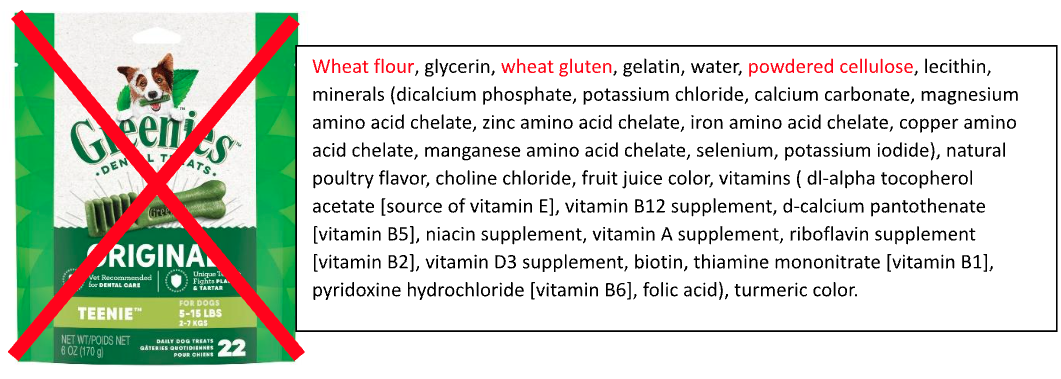
Lastly, there’s the recognition in holistic medicine that one area of the body has relationships to the whole. Various regions on the ear, the colon, and yes, the dentition, connect to the meridians and internal organs of the body.
While loss of teeth happens to individuals, it’s best to minimize this as much as possible for optimal health. The chart below shows relationships between the internal organs and individual teeth in people, and we can assume that these relationships hold true with our veterinary patients as well.
A Holistic Approach to Pet Healthcare
Become a New Client.